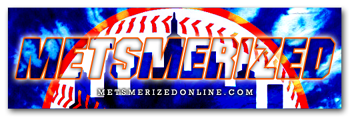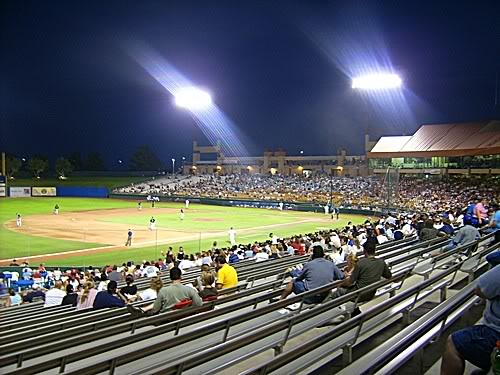I attended my first ballgame at Cashman Field in 1987, or ’88. I know that because we got an autograph from Bip Roberts. My family was on vacation in Las Vegas and I was bored by hanging out in the video arcade at the Circus Circus all day.
The team was called the Las Vegas Stars back then, Triple-A affiliate of the San Diego Padres. Being shortly after the Mets World Series victory in ’86, I was in a state of full baseball obsession. I was spoiled though. I had seen my team go from perennial cellar dwellers to World Series Champs in about five years.
Back in New York, I was in high school, and I rode the bench with our varsity baseball team. I was the manager, which in high school just means the one who keeps the score book and helps with the equipment. But I didn’t stop there. I compiled the stats after each game. I made up index cards for each player, in pencil, because I would erase and update as needed. During practice, or before games, the guys would gather around me, clamoring for a look at their cards. These were my guys.
When I went off to college in Syracuse, I chose to major in journalism, because I wanted to write about baseball. One of my professors took me to a Skychiefs game, then the Triple-A affiliate of the Blue Jays. Minor League ball was the only choice once I moved upstate. But there was a lot of it.

Growing up less than 40 miles from Shea Stadium, I had never thought much about the minor leagues. I would hear the name of the Mets’ top draft picks, and then forget about them until they showed up in Flushing 3 or 4 years later. Granted, there weren’t many options to keep track of what was going on down on the farm before the internet, aside from subscribing to Baseball America.
I ended up having to leave school after the first year. I joined the Army, which meant I spent four years far away from my Mets. One of my duty stations was Fort Carson, Colorado. So I went to see the Colorado Springs Sky Sox, then the Cleveland Indians Triple-A affiliate. The Rockies were still a year away from their first season. I spent the rest of my tour in Germany. No baseball there.
Back in the states, I went to school in Santa Barbara. Dodger Stadium was just a couple of hours away. But then I moved to Provo, Utah for graduate school in 1999. The Mets were making a playoff run. We all know what happened that fall. And the fall after, when they went to the World Series. After they lost, I remember walking around in the supermarket thinking, no one around here cares what just happened. The Subway Series meant nothing so far away from the metropolitan area.
But we did have baseball. There were the Salt Lake Bees, Triple-A of the Angels. Then the Angels brought a rookie ball team to Provo. I was teaching summer semester, but I decided to apply for a second job at the ballpark. I got a job working as an usher. The pay was negligible, I think around $5 an hour, but I was basically getting paid to watch baseball.
The players, most of them right out of high school, were probably making a similar pittance. But they played their hearts out, chasing their dream. I got to know some of them. They were my guys. I got to hear about how they got there and their hopes for making it. But mostly just how much they loved the game.
I never found out if any of those Provo Angels made it to the big leagues. A year later, after I left Provo and moved to Vegas, the Angels moved the team to the neighboring town of Orem, and they became the Orem Owlz.
Now in Vegas, I visited Cashman for the first time in almost 20 years. The team had become the Las Vegas 51s, the Dodgers affiliate. After 8 years the Blue Jays moved in. I went to a game or two every year. But then came the Mets in 2013. And once again, I had my guys.
Much closer to the big leagues, I get to see some of them make it. And some never will. Some pretty much know they may have come to the end of their road. But they love the game so much they play as long as they can. They may go to independent leagues, or Japan, or Korea. And some of them even come back and play in the minors again.
My dad says most of them are just there so the real prospects have someone to play with as they blast through the system. That may be true. But someone saw something in each one of them. And for every Kris Bryant or Bryce Harper, there are hundreds of guys, from whom no one expects much, but they work hard, and some of them become great. You never know.
I cheer for them all just the same. They all have a story. And that’s what I love about the minor leagues. In the big leagues, they have stories too of course. How they got there, if they succeed or fail. But the minor leaguers are in that place where they don’t know what’s going to happen. Any day, the manager could call them into his office and tell them they are going to get their shot in the show. And then, they could help my Mets.
The gentleman who sits in the row in front of me at Cashman told me that he has had those same seats in the the row behind the home dugout for 33 years. In that time, he has seen guys from all four of the organizations on their way up, and on their way down. And now he’s seeing some of those guys’ sons on their way up and/or down.
I asked him earlier this season who his “native” team is, from where ever he lived before coming to Vegas. Ostensibly, I meant which big league team. “Nobody,” he said, gesturing to the field. “These guys.”
(Mascot photo by Cirilo Maldonado, photo with Brandon Allen by George Nieves)



















